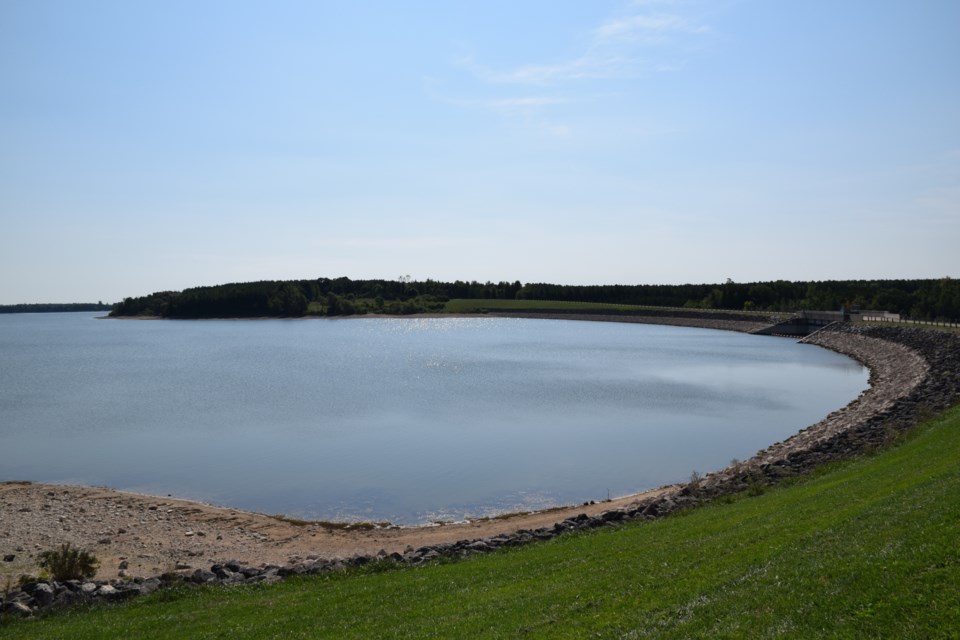Water levels in Guelph Lake are significantly low, about .70 metres lower than the reservoir’s ‘lower range’ levels for this time of year.
Shand Dam/Belwood Lake reservoir near Fergus has a similar low water situation, with levels about .75 meters below the lower range.
Guelph Lake looks much like it did four years ago, when drought conditions settled into southern Ontario and left watercourses and reservoirs in the Grand River Conservation Authority system extremely low.
Water levels in Guelph Lake began to dip in mid-June because of a lack of rain, and continued to drop throughout the summer. Periodic rain in August, at times heavy, have not replenished the reservoir.
“Reservoir levels at Guelph Lake are definitely below our normal operating range for this time of year due to the hot/dry conditions we’ve been experiencing for much of the summer,” said GRCA spokesperson Cameron Linwood in an email.
The entire watershed was placed under a Level 2 low water response condition, which made voluntary 20 per cent reductions in water usage kick in for major water users like municipalities and industry.
The last time a Level 2 was issue was during that 2012 drought.
“This is directly connected to the dry summer weather and low flow conditions in many of the rivers and streams throughout the watershed,” Linwood added, referring to the Level 2.
GRCA is responsible for maintaining water flows throughout the Grand River watershed, ensuring that cities, towns and industries that rely on that water have enough to maintain operations.
Guelph relies on flows through the Speed River for operations like its waste water management system. The city’s drinking water supply comes from groundwater.
Linwood said GRCA is currently meeting its downstream targets. Stress on the system is generally reduced in the fall, and the authority anticipates that its current operational strategy will be not require significant adjustment.
The Level 2 voluntary reductions will “help support adequate water supplies into the fall,” he said in the email exchange.
Parts of the watershed have received short periods of heavy rainfall, but much of it is in need of significant precipitation, he added.
“To help balance out the drought conditions we’ve seen all summer, we’d need the equivalent of about 2-3 months’ (80-100mm) worth of rainfall over an extended period to help return the watershed to more normal conditions,” he said.
Intense rains in August, he added, essentially ran off the “sun-baked landscape” without soaking into the soil.
“Long, soaking weather systems would be much more beneficial to the watershed,” he added.
